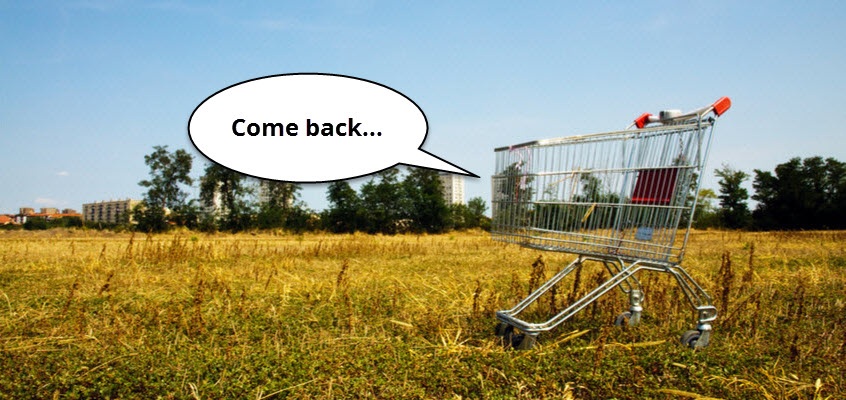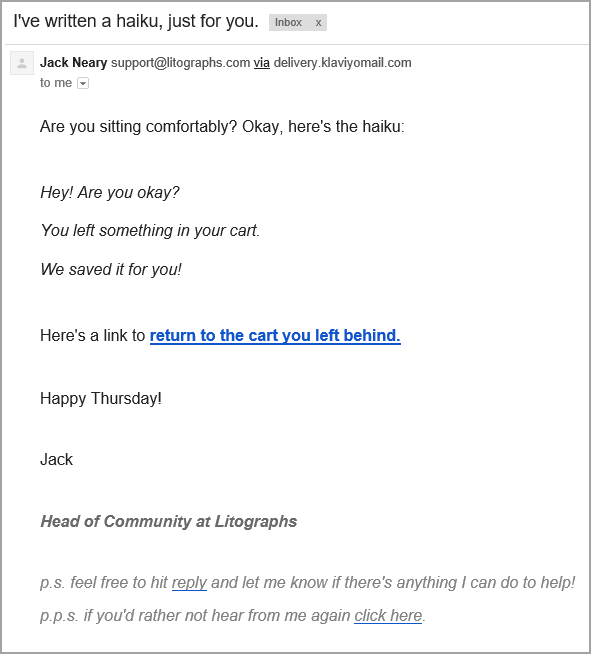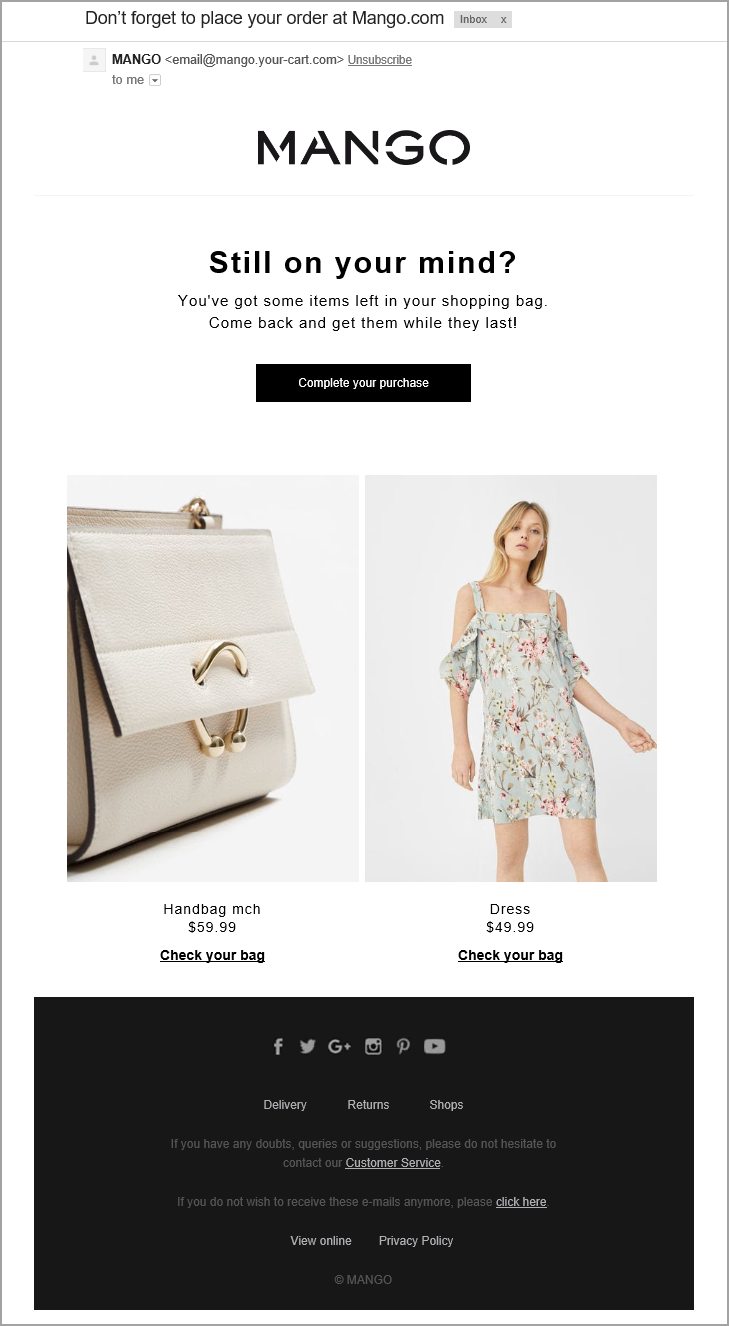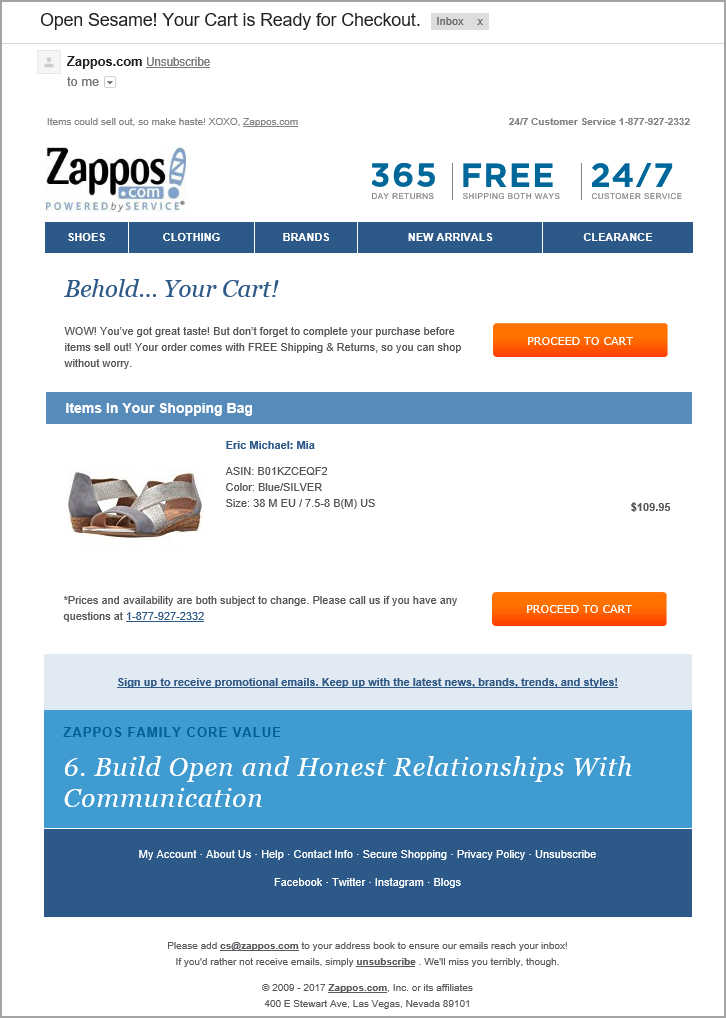
7 Tips for Crafting Effective Abandoned Cart Emails
In an April blog post, Skubana shared their insights on the reasons customers abandon online shopping carts. Worldwide, about 75% of all shopping cart processes are abandoned before the completion of a purchase; imagine the impact on your revenue and customer base if you could mitigate this burden by even 5 or 10 percent.
Abandoned cart emails are one of the most effective strategies for eliminating lost revenue when customers exit the purchase process. According to SalesCycle, customers open 44.1% of abandoned cart emails, click on 11.6% of messages and finish a purchase on 29.9% of clicks.
Regardless of the statistics denoting their effectiveness, abandoned cart emails only work when you employ proven strategies that create results.
Optimize the subject line
People get a lot of emails every day and are naturally guarded against promotional pitches. Your message won’t get opened without a subject line that attracts attention and interest.
You don’t have time to be coy; identify your brand and the purpose of the email in the subject line. When possible, include the customer’s first name and mention the specific brand that was left in the cart. If the item has a limited time deal or special value, mention this as well. This approach creates a sense of urgency and is more likely to lead to action.
Consider the following example for a buyer who left a Coach bag in a shopping cart:
“Jessica, Finish Your Coach Bag Purchase at XYZ Within 8 Hours to Save 10 Percent!”
Here’s a clever email from a company that is all about words:


Design for consistency and simplicity
Design your cart email template to emphasize consistency with your website and brand, and simplicity in navigation. A consistent look and feel help trigger a subconscious reminder about the initial product investigation on the website. It also helps create branding in the long-term as customers move back and forth between in-box and site.
Make it simple for the buyer to identify the product and information and click through for a return to the shopping cart. Include a large and visible call-to-action button.
Time it right
The timing of your message is as important as the content. The SalesCycle data revealed that the sooner you follow-up after an abandoned cart, the higher the conversion rate. This makes sense given that the purchase process is freshest in the mind of the consumer shortly after exiting the site.
An email delivered within 20 minutes of abandonment converts at 5.2 percent. Within an hour, conversion is still high at 4.5 percent. However, waiting several hours or even until the next day drops conversion rates by about half.


Identify the product
Don’t make any assumptions that your customer will automatically remember the time on your site or the product. Clearly identify the product or service left in the cart, and offer information relevant to the customer. Think about someone trying to revive a conversion a few hours after the original discussion without framing the context; it is difficult to understand the point.
First, remind the customer that the purpose of the email is that one or more items were left in the shopping cart. This inclusion lets the person know that you aren’t just randomly targeting her. Share a basic product description or present content illustrating the likely reason the buyer was considering the purchase in the first place.
An image is critical to success as well. A large, prominent picture of the item should take up a good portion of the message. The buyer is more likely to quickly connect with the reason for the email with the visual reminder. Without a product image, the reader may not take the time to explore the content.
Support the purchase value
It is common in marketing and sales to run into customers who have bought into the basic value of a solution, but remain hesitant to commit financially to a purchase. Salespeople face this hesitation or stall routinely when trying to convert interested prospects into committed customers.
Buyers abandoned carts for a variety of reasons, including computer crashes or technical problems. However, lost interest, uncertainty or lack of financial commitment are common. Thus, your follow-up email should take these motives into account and address them.
Offering customer ratings and reviews is one of the best ways to combat the hesitation or uncertainty that led to abandonment. You could provide an image with an average product star rating, along with a few concise testimonials, and invite the reader to clickthrough to read more consumer comments. Alternatively, present one of the most compelling reviews, and then offer the invitation.
Offer related items
Another reason people abandoned carts is because the item left behind was not a precise enough match for the desired solution. Offer related product or service suggestions to trigger realization of a better fit.
In some cases, people overlook more optimal products, or they don’t get far enough in their site search. You might even drive add-on sales with this approach, where related purchases are added to the cart during the purchasing process.
Include a call-to-action
Don’t leave anything to chance; deliver a clear, obvious and compelling call-to-action that motivates the customer to return to the cart. Position the button near the product description or immediately after your description and sales pitch.


Earn back your customers’ business
If you don’t have an abandoned cart e-mail in your communication system, it isn’t a question of “if” you are missing out on sales, but “how much” revenue is lost. Successful eSellers need this tool to convert a significant portion of customers who showed interest in a product purchase but exited before completion.
Don’t overlook at the importance of effective strategies, though. Just as with other types of e-mail marketing campaigns, the right design, content, and timing of execution all contribute to a high return on investment.




